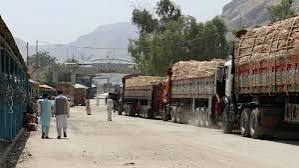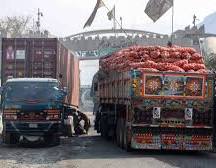The incidence of Afghanistan has decreased significantly
Yes, the decline in Afghanistan’s exports has occurred in recent years due to various reasons, including economic crises, sanctions, trade restrictions, and security problems. These factors have led to a lack of foreign exchange resources, a decrease in employment and weakness in domestic production.
On the other hand, changes in government policies and the lack of proper infrastructure to support production and export continue to fuel this situation. Difficulties in accessing international markets and reducing trade interactions with neighboring countries are also other factors that have affected this issue.
The imbalance between export and import is the main problem of Afghanistan’s economy
It is absolutely true. The imbalance between export and import is one of the main problems of Afghanistan’s economy. This situation has caused excessive foreign currency outflow from the country and heavy dependence on imports. Afghanistan mainly exports raw materials and agricultural products such as dried fruits and saffron, but the volume of these exports is much less compared to imports.
The high import of basic and industrial goods, including food, industrial equipment, fuel and consumer goods, caused the country’s trade balance to become negative. The lack of sufficient infrastructure for domestic production and the lack of access to appropriate financial and technological resources are also the main reasons for dependence on imports.
This imbalance has several negative effects, including pressure on the exchange rate, increasing inflation, and increasing Afghanistan’s economic dependence on other countries.
Challenges and obstacles to export to Afghanistan
Challenges and obstacles to export to Afghanistan include various issues that make doing business with this country difficult. Some of these challenges are:
- Security problems: Insecurity and political instability in Afghanistan is a major obstacle to trade and affects the transportation process, security of goods, and confidence of traders.
- Lack of transportation infrastructure: Afghanistan faces a serious lack of transportation infrastructure such as proper roads, railways, and air transportation. This problem increases costs and delivery time.
- Banking and financial restrictions: International sanctions and restrictions on Afghanistan’s banking system have made financial transfers and international interactions complicated and costly for businessmen.
- Bureaucracy and complex customs laws: The presence of extensive bureaucracy and complex laws in Afghan customs and government offices can increase the time and costs of exports.
- Low quality products and non-compliance with standards: Many of Afghanistan’s export products are at a low level in terms of quality and international standards, which prevents the goods from entering some foreign markets.
- Border problems and political relations with neighbors: political disputes with some neighboring countries have affected trade relations and caused restrictions and challenges in the way of exports to Afghanistan.
- Lack of government support and incentive policies: The lack of government support, including the provision of financial facilities, tax exemptions, and access to low-interest loans, has limited export activities to Afghanistan.
- Lack of digital infrastructure and technology: Lack of advanced digital systems to conduct transactions and limitations in technology needed to improve speed and accuracy in trade is another obstacle to exports to Afghanistan.
- Logistical problems and high costs: the lack of proper storage facilities, improper packaging and high transportation costs, especially for heavy and perishable products, are important obstacles for exporting to this country.
These challenges have not only limited trade with Afghanistan, but also had negative effects on the country’s economy and caused the country to remain significantly dependent on imports.


